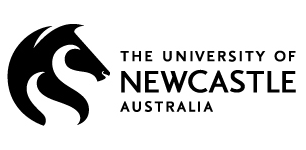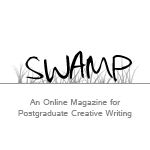All The Lies Inside The True Color Of Non-Blue
Marina Alamo-Bryan (University of Melbourne, Australia)
.
.
During the summer months it rains as if history is claiming vengeance for all that’s gone wrong with her in the past. It is an unyielding pour. Hour-long-lasting. One that drenches you in seconds. The kind that destroys umbrellas without a hint of mercy. It is inevitable, and unstoppable, this Mexico City rain. For days it seems as if the lake that once inhabited this valley is successfully reclaiming its proper place. But once the roads become rivers, and parks are transformed to ponds, and cars turn into passenger-less absurdly bobbing ducks, and loads of garbage gets stuck under bridges, and homes become flooded with water, and walls begin to feel the phantom flood-lines which will become subtle reminders of the waters passing – then – then it stops. But only for a short time. Just enough to let us survive. Not enough to kill us altogether. Enough to make it torture, not enough to make it death.
And then it rains again, and perhaps hails, making streets look like paper, and turning books into mush, car engines into waterslides, and toilets into hail-vomiting monsters. This is our rain: true, tropical, highland, third-worldly rain. And we love it. Yes, we are masochists. How could we not? Do we not go on living here? Is it not because of exactly these small, loving, sufferings that we go on living here? Yes, undoubtedly there is a glimpse of hidden excitement when wondering if you’ll be able to walk back home tonight, or whether you might have to swim back home. It is the excitement of living within the surreal, not as an observer of it, but rather as its most endeared participant. It’s also the consequences of 400 years of stubborn attempts to civilize that originally barbarous expanse of unbecoming water – and eventually succeeding in the most anti-aesthetic manner one could think of: by pathetically incarcerating the water, by confining it and turning the rivers into sewage, and the pumped out lakes into wasteland.
Nature does take revenge you know, even after 400 years. And when that water comes back, wanting to reclaim what’s hers, well, the water goes nowhere, because it has no place to go to. So it stays. Who’s to blame her? With all that concrete there’s no soil left to swallow it, no crops to soak it up, no sponge to help it find its place. So it loiters for some days, just for the fun of making our existence a bit more complicated than it already is. We’ve made it useless? We’ve made it impossible for her to yield fruit? Fine and dandy then, she says, I’ll make it impossible for you to get home in time for dinner.
So it sits there, dark like a dark and stormy night in the middle of the largest city in the world. The water that has nowhere to go insists on staying where it once was, where it once covered all of this urban freakery; before there was concrete and pavement and the water became trapped underneath all this civilizing.
But the concrete did come, and the pavement did cover. And sadly, slowly, the lake turned into gelatinous mud as waterways turned into roads. Once everything was covered, and we were all securely sitting atop a giant crème-brule, that’s when the buildings began to sink. As the heavier buildings sank deeper, lighter ones began to gain height, all compensating for the mush underneath that was lost and was gained. So topography became an ongoing process, an unending arrival of new hills where there used to be old valleys, and so on.
Nothing is forever in these lands, everything is ever-changing. No sense in getting used to things. So, in accordance with our mutational nature, the gelatinous pulp that stood underneath our streets eventually began to dry up, and after several decades of drought, all that’s left is a brief layer, a crust, a thin shell really, of brittle concrete. And when the rain pours, it breaks. Like the layer of sugar on a crème-brule. But the filling here is far from sweet. Quite the opposite, it is rather…cavernous. The immediate consequence is that holes of incomprehensible enormity appear on the pavement every rainy season throughout the city. This is not magic-realism my friends, oh, no, this is not imagination; this is real. Cavities with ten meter diameters, five meter depths, all appearing out of nowhere, swallowing down trees, cars, overly-curious drunkards. We are not sinking anymore; we are disappearing. We are falling into the crevices of our own making.
Having become a floating shell of a city, with no soil under us, only putrid air where water once was, I am now beginning to believe that maybe nothing ever really stood under our feet. Maybe we were always meant to float: on water once, now on nothingness, just foul air. One of the ominous fissures on our concrete shell of a city innocently appeared on the street outside a friend’s house one day – after rain, of course. Worried that this small crevice might eventually lead to the entire house being swallowed by the void below, the family informed the authorities who promptly came forth to fill up and repave this earthly wound. But the space below, which opened up under the gash, seemed eternal and would not be filled. No matter how much dirt they poured in, there always seemed to be more space underneath to fill up.
Eventually, the workers gave up and just patched up the hole as best they could, like fixing an involuntarily cracked egg-shell at the supermarket, and left. They’ve never returned a call since.
The gap keeps appearing again and again each year, during the rainy season. It has become a yearly reminder of the abyss that will swallow us whole one day. You just wait for the next earthquake and we’ll see what happens. Let’s just hope it comes during the rains, so at least we’ll find ourselves floating on water and not emptiness when the crust beneath our feet falters.
The water will be dark though, not blue. Hard to find your way in it. One might imagine Mexico City to be flooded in blue, but no, this is not the case. Whoever naively considers water to be blue has clearly not stared long enough into a glass of it, or hasn’t been in a flood. The first is transparent, the latter is dark. Or rather, flood water is destined to encompass far too many colours: all of those included in the things it kills, and the things it will eventually bring forth, so it really can’t be considered to be blue or any other colour.
Perhaps the only appropriate way of describing it would be an admixture of all possible colours: a dark hue with a slight hint of non-blue, maybe?
.
.
Born in the midst of chaos, Marina Alamo Bryan has been forever shifting alongside and in between borders made up of language, countries, disciplines, people. Like most nomads she is constantly on the move. Originally from Mexico City she now lives and studies in Melbourne, Australia.






